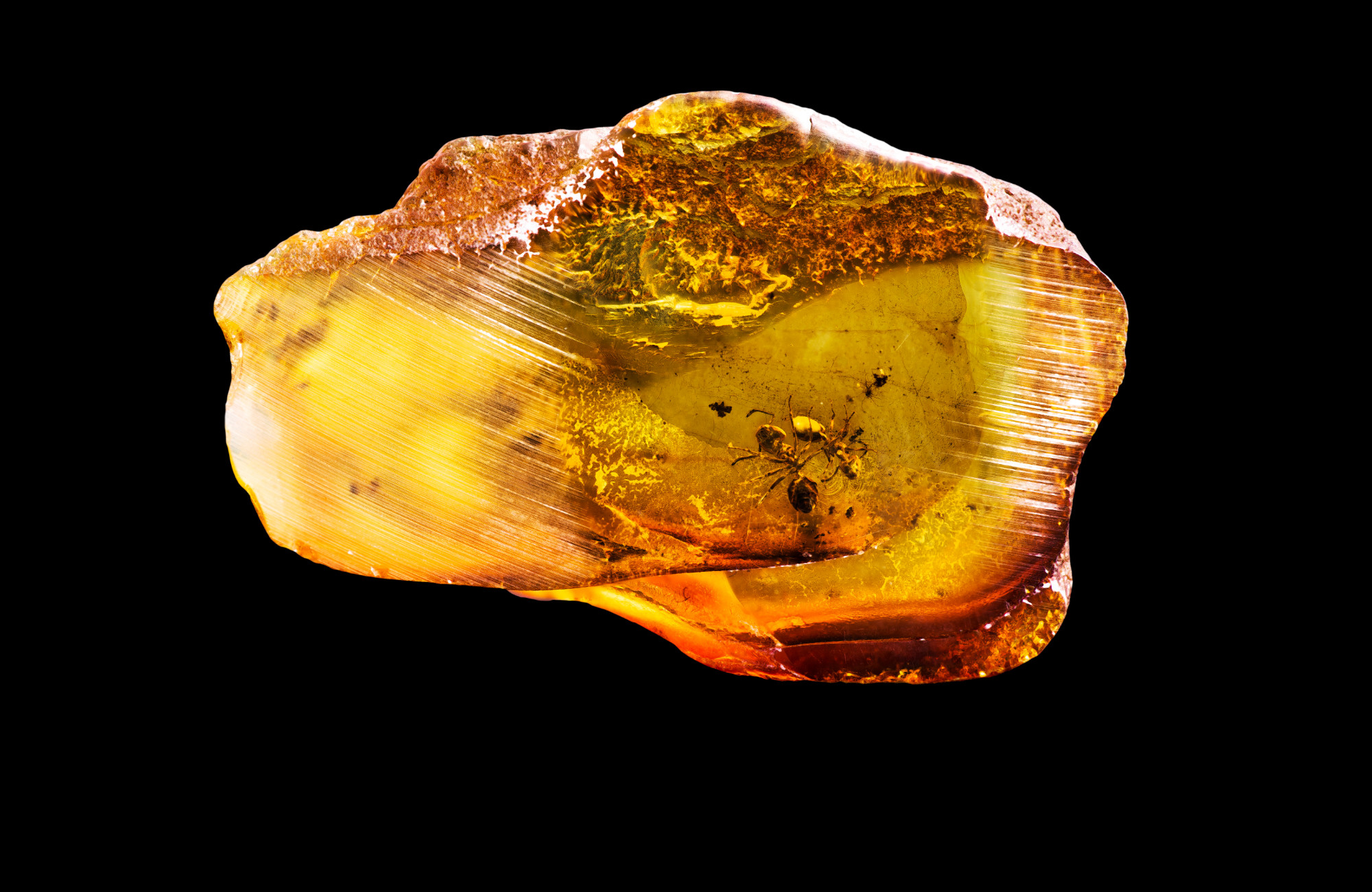 Evolution & Behaviour
Evolution & Behaviour
How the ancient ‘hell ant’ got its bizarre horn
A unique group of extinct ants called “hell ants” were preserved in fossil amber dating to 78-100 million years ago. They had bizarre mouthparts and horns that are not found among nearly any of today’s living insects. A new fossil discovery reveals the predatory role of this strange headgear and illustrates how unique these ants are in evolution.

Imagine our planet about 145-66 million years ago during the ancient Cretaceous period. Dinosaurs may perhaps come first into your mind as the most iconic ancient animal. But of course, many other organisms lived together as parts of the ancient ecosystem, including ants.
Many ancient ants looked very different from modern ants – notably, an extinct group of ants that had scythe-like lower jaws and unusual horn-like appendages. Because of this bizarre and intimidating headgear, these ants are nicknamed "hell ants". Hell ants are one of the most ancient ants, and have no modern parallels among over 15,000 species of today's living ants. But how did this unique group arise in ants' early evolution? Was the bizarre headgear perhaps beneficial for them to survive another day?
Fossils preserved in amber provide clues to understanding this extinct group of ants: hell ants crawling on trees would sometimes become trapped in the sticky resin and then be preserved in three-dimensional detail as the resin fossilized into amber over millions of years. Fossil deposits, varied in place (Myanmar, Canada, and France) and in time (78-100 million-year-old), suggest that hell ants successfully survived over 20 million years across three continents. These fossil deposits also show that hell ants likely lived in tropical to semi-tropical low-lying forests, and that they might have been predators based on their sharp tusk-shaped lower jaws. However, how such strange ants evolved and spread across the planet remains mysterious.
In this study, we discovered a new amber fossil that amazingly captured a moment of predation, which might help us solve the mystery of how hell ants used their unique headgear. The 99 million-year-old fossil amber specimen preserved a kind of hell ant (named Ceratomyrmex ellenbergeri) with its prey (a cockroach relative called Caputoraptor). The prey was trapped between the ant's horn and jaws. This Fossil revealed that while modern ants' lower jaws open and close horizontally (like the way you move your arms when giving someone a hug), hell ants' lower jaws move vertically – similar to how human mouths move. Notably, this vertical mouth movement is a unique feature that is not seen in any insects alive today. Many hell ants' horns likely acted as a "backstop" for the long and tusk-shaped lower jaws when closing.
Beyond describing this strange insect, the story of the ancient hell ants illustrates how evolutionary processes rely on, and build upon, initial innovations to generate diversity. We hypothesized that the head and lower jaws were evolving together in hell ants in a manner that is not seen in today's living insect species. To put this hypothesis to the test, we measured the mouthparts and heads of over 100 modern and fossil ancient ant species. This way, we found that hell ants have a strong relationship between the size of the lower jaw and the head: the larger the hell ant's lower jaw, the larger the head – but this is not necessarily the case with other ants. This finding supports the hypothesis that the characteristic head and lower jaws evolved together for this predatory adaptation.
Collectively, our study illustrated how hell ants obtained and elaborated on their dramatic head adaptations. First, there was an innovation that allowed mouthparts to move vertically. This put evolutionary pressure on a segment of the head and mouthparts together, something we call evolutionary integration. The integration of these two features generated a new evolutionary pathway that was responsible for all the bizarre adaptations we see in hell ants. So, amazingly, this unique group of ants demonstrates a "bite" analogous to that of vertebrates like humans.
Original Article:
Barden, P., Perrichot, V. & Wang, B. Specialized Predation Drives Aberrant Morphological Integration and Diversity in the Earliest Ants. Curr. Biol. 30, 3818-3824.e4 (2020).
Next read: How did wild cats turn into our beloved domestic animals? by Magdalena Krajcarz , Maciej Krajcarz
Edited by:
Dr. Akira Ohkubo , Associate Editor
We thought you might like
How humans gave acne to the grapevine
Feb 28, 2015 in Evolution & Behaviour | 3.5 min read by Carlos J. Rivera-RiveraThe lingering effects of parental care and its role in evolutionary change
Jan 27, 2016 in Evolution & Behaviour | 4 min read by Rebecca KilnerLiving without mitochondria: the downfall of one textbook truth
Oct 3, 2016 in Evolution & Behaviour | 3.5 min read by Lukáš NovákFancy footwork: Darwin’s pigeons and the evolution of foot feathers
Jan 20, 2017 in Evolution & Behaviour | 3.5 min read by Eric DomyanMore from Evolution & Behaviour
Cicada emergence alters forest food webs
Jan 31, 2025 in Evolution & Behaviour | 3.5 min read by Martha Weiss , John LillSize does not matter: direct estimations of mutation rates in baleen whales
Jan 29, 2025 in Evolution & Behaviour | 4 min read by Marcos Suárez-MenéndezThe Claws and the Spear: New Evidence of Neanderthal-Cave Lion Interactions
Jan 22, 2025 in Evolution & Behaviour | 3.5 min read by Gabriele RussoA deep-sea spa: the key to the pearl octopus’ success
Jan 20, 2025 in Evolution & Behaviour | 3.5 min read by Jim BarryFeisty fish and birds with attitude: Why does evolution not lead to identical individuals?
Aug 31, 2024 in Evolution & Behaviour | 3 min read by Lukas Eigentler , Klaus Reinhold , David KikuchiEditor's picks
Trending now
Popular topics


